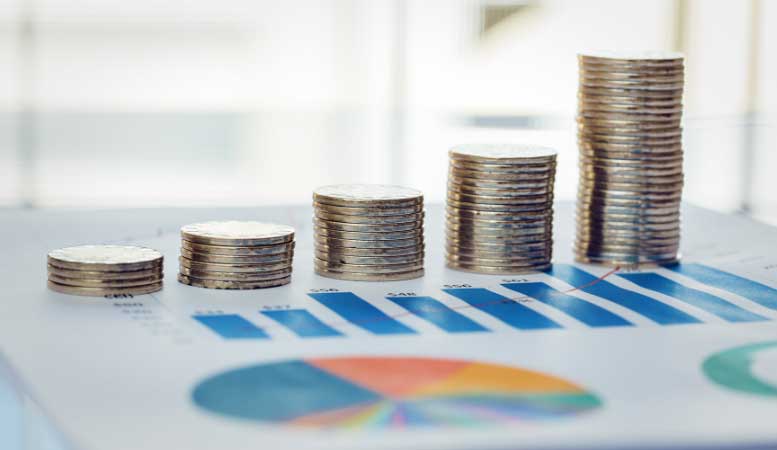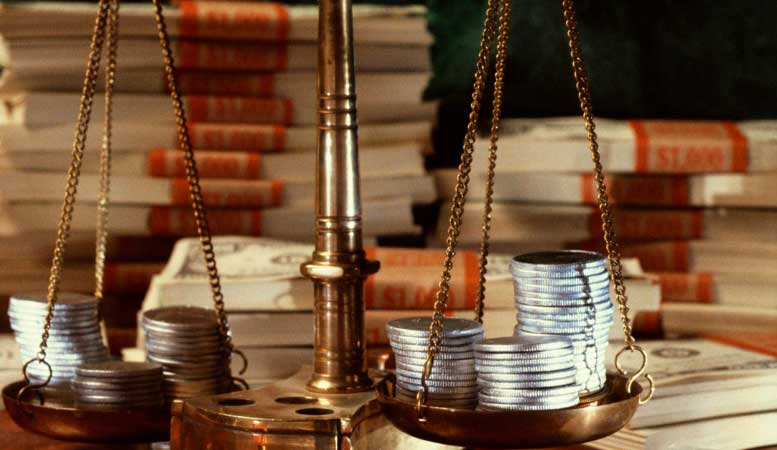Table of Contents
If you’re interested in investing in precious metals, you’ve likely noticed that silver is cheaper than many other options like gold, platinum, and palladium. Precious metals investors have coined the term “poor man’s gold” for the white metal because of its low average cost compared to high gold prices. So, why is silver so cheap?
This article discusses the factors impacting silver prices and why the shiny metal is so cheap compared to gold and other metals. While you may use this guide for educational purposes, please consult your financial advisor if you’re seeking investment advice.
Why Is Silver Considered a Cheap Precious Metal?
The primary reason people consider silver to be a cheap precious metal is because of the gold-to-silver ratio. Silver prices alone are not necessarily “cheap” compared to basic household goods, though they are more appealing than those of gold and other precious metals.
In January 2023, an ounce of gold was worth $1,870, while the spot silver price for an ounce was just over $23. The gold-silver ratio shows an enormous price gap between the two commodities. Of course, gold and silver prices frequently fluctuate, though the gold-silver ratio often displays a difference in the thousands of dollars.
Gold is not the only expensive option in the precious metals market. Another industrial metal, platinum, closed in January 2023 at $994 for one troy ounce. Palladium, another one of silver’s close ties in the precious metal market for its comparable industrial metal demand rates, cost $1,789 per ounce in January 2023, almost reaching the gold price.
Many consider the price of silver to be cheap because of how it compares to the extremely high cost of other precious metals and base metals.
The Historical Value of Silver

Silver mining dates back to 3000 B.C. in Anatolia (modern-day Turkey), where the concept of silver production began expanding with improved technology and production techniques by 1200 B.C.
Silver demand reached a new height when Spanish conquistadors began exploring territories and seeking more wealth between the 16th and 19th centuries. By this point, silver mining companies were popping up around the globe, including in the United States, after the discovery of Nevada’s Comstock Lode.
During this period (and before it), many nations created official bimetallic gold-silver standards for fixed-rate prices on silver bullion compared to gold prices. The Roman Empire set the ratio at 12:1 before the U.S. Coinage Act of 1792, which established silver-backed currencies, set the ratio at 15:1 (one part of gold equaling 15 parts of silver).
With gold and silver being the two metals primarily used in free coinage in nations around the globe, by the 1870s, silver mine production had increased from 40 to 80 million ounces per year.
While silver peaked during this period, a few factors led to its decline, allowing gold to take off. First, the U.S. Congress passed the Coinage Act of 1873, removing silver from the coin standard. Additionally, the Franco-Prussian War of 1870-71 created a surge of gold through bribe payments, which led to the U.S. and many other countries reducing their silver reliance and favoring the yellow metal instead.
Factors Affecting the Price of Silver
Numerous factors affect the price of silver, including geopolitical and economic uncertainty, U.S. dollar strength, and climbing interest rates.
Economic and Political Factors
When you think about silver market demand, you probably imagine jewelry first, which is a fair assumption. Sterling silver jewelry and silverware are popular products that account for a large sector of physical silver demand. During poor economic periods, people tend to spend less on extravagant purchases, like expensive jewelry and silverware, which can reduce demand and cause low prices.
The Value of the U.S. Dollar and Investment Demand
When the inflation rate increases, the U.S. dollar becomes less valuable, so investors, organizations, and government entities seek ways to protect their purchasing power and wealth. Many choose to buy silver as a way to hedge against inflation since it tends to gradually gain value even as the economy fails. When more silver investors add the metal to their investment portfolio strategies, the price of silver rises with increasing demand.
Interest Rates
Rising interest rates impact all investment classes, from equity markets and gold performance levels to stocks in silver companies. Low interest rates typically mean positive economic conditions, more spending, and more investing, which can result in better silver performance rates. Central banks often spike interest levels as a response to high inflation rates, which prevents more borrowing and can make it hard for people to invest in new asset classes.
How Does Silver Supply and Demand Affect Its Price?

We briefly mentioned some of silver’s demand sectors, though the relationship between silver’s supply and these sectors is one of its largest factors determining price. As with any other product, high demand levels and low supplies create a shortage (or deficit), which builds the perfect environment for high prices. Conversely, low needs and high supplies create surpluses that result in low costs.
Is There an Oversupply of Silver?
Silver is not in a surplus; it’s in a deficit. Some predictions state that the world will lose over 100 million ounces of silver in just the next five years. The Silver Institute predicts a deficit of 200 million ounces for 2023.
Silver requires the byproduct of copper, zinc, and gold, meaning that output relies on mining production from numerous other industries. In light of the complex byproduct metal production process, combined with labor shortages and supply chain issues, we’re not seeing the same level of silver produced as we did in previous years. In 2016, mines produced 900 million ounces of silver, but in 2022, the production rate for the metal dropped to 843.2 million.
Despite this drop in supply, demand for silver remains high. Between its use cases in electric vehicles, solar panels, jewelry, fabrication demand, and others, many market sectors still require massive quantities of silver, but the mines cannot keep up.
What Are Some Primary Uses of Silver?
Silver’s primary uses include the following:
- Electrical batteries
- Solar panels
- Vehicles, especially modern, hybrid, energy-efficient cars
- Jewelry
- Silverware
- Dental alloys
- Coins and bullion
- X-ray imaging and photography
- Soldering
Silver has a high thermal conductivity point with low corrosivity to many substances, making it intrinsically valuable across numerous market sectors, especially in industrial production. Silver prices rely heavily on tech and industrial demand levels, which continue rising as more industries embrace greener solutions that require silver for more environmentally friendly technology.
Is Silver an Inflation Hedge?
Yes, silver can act as an inflation hedge because it does not tend to drop in price when the economy plummets with high inflation rates. In January 2008, at the start of the Great Recession, an ounce of silver cost $24.22, while in March 2011, one ounce reached $51. Physical silver trended upward throughout one of the United States’ worst economic periods in the last few decades, while many other investment classes failed.
Will the Silver Price Increase in the Future?
With the enormous estimated silver deficit coming in 2023, a potential recession in the near future, numerous auto manufacturers considering silver mining investments, and the rise of green solutions only spiking the need for silver across industries, many expect prices to begin rising in the next few years. Between January 2023 and March 2023, silver prices have already increased from $22.30 to $26.90 per ounce, with more investors jumping on the trend.
Keith Neumeyer, the CEO and president of First Majestic Silver, explains in an interview that he predicts silver prices to reach $30 per ounce by the end of 2023 and $125 in the next few years. According to a London Bullion Market Association survey, analysts predict an 8.8% silver price increase this year, from $21.73 to $23.65 per ounce. Whether you’re interested in investing in large or small quantities of silver, now may be the time to purchase before prices rise, though be sure to consult your financial advisor first.
Invest in Precious Metals With Oxford Gold Group Today
Now that you understand the answer to “Why is silver so cheap?” and how the price reflects intrinsic value, you may be ready to invest. If so, you’ve come to the right place. At Oxford Gold Group, we provide various silver investment options, including physical coins, retirement account options, and more.
Contact Oxford Gold Group today at (833) 600-GOLD to learn more about our silver products.








